What is a Radial Fan? Areas of Use?
A radial fan is a type of fan that pushes air outward from the center. Radial fans are used to provide high-pressure and high-flow airflow.
Radial fans are used in industrial applications, ventilation systems, heating and cooling systems, drying and baking processes, dust collection and filtration systems, fire extinguishing systems and many more.
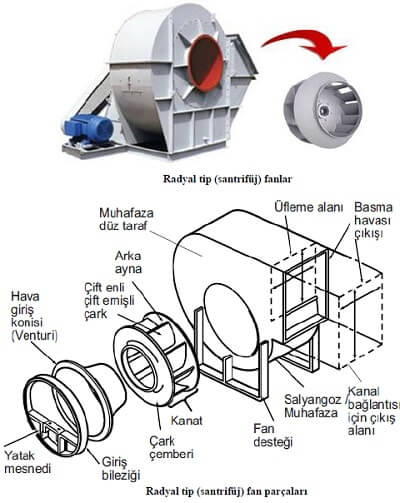
Industrial Radial Fan Working Principle
It works like this: The impeller inside the fan is rotated by an electric motor. The impeller pushes the air outward from the center and sends it to the outlet of the fan.
The blades at the outlet of the fan change the direction of the air and direct it in the desired direction. Pressure and flow rate depend on the size, shape, number and rotational speed of the impeller.
What Should We Consider When Choosing a Radial Type Fan?
We must consider the following factors:
- Amount of air flow (flow rate) and pressure required by the application
- Characteristics of the environment where the fan will operate such as temperature, humidity, dust amount, chemical gases
- How the fan is mounted (it can be mounted on the wall, ceiling, floor or pipe)
- Energy consumption and efficiency of the fan
- Noise level and vibration of the fan
- Need and ease of maintenance of the fan
What are the Advantages of Radial Fans?
The advantages are as follows:
- Provides high pressure and high flow rate airflow
- Adapt to different environments and applications
- Durable and long lasting
- They are energy-efficient and efficient
- Low noise level
What are the Disadvantages of Radial Fans?
Disadvantages include:
- Large in size
- Difficult to assemble
- They weigh a lot
- Costly to maintain
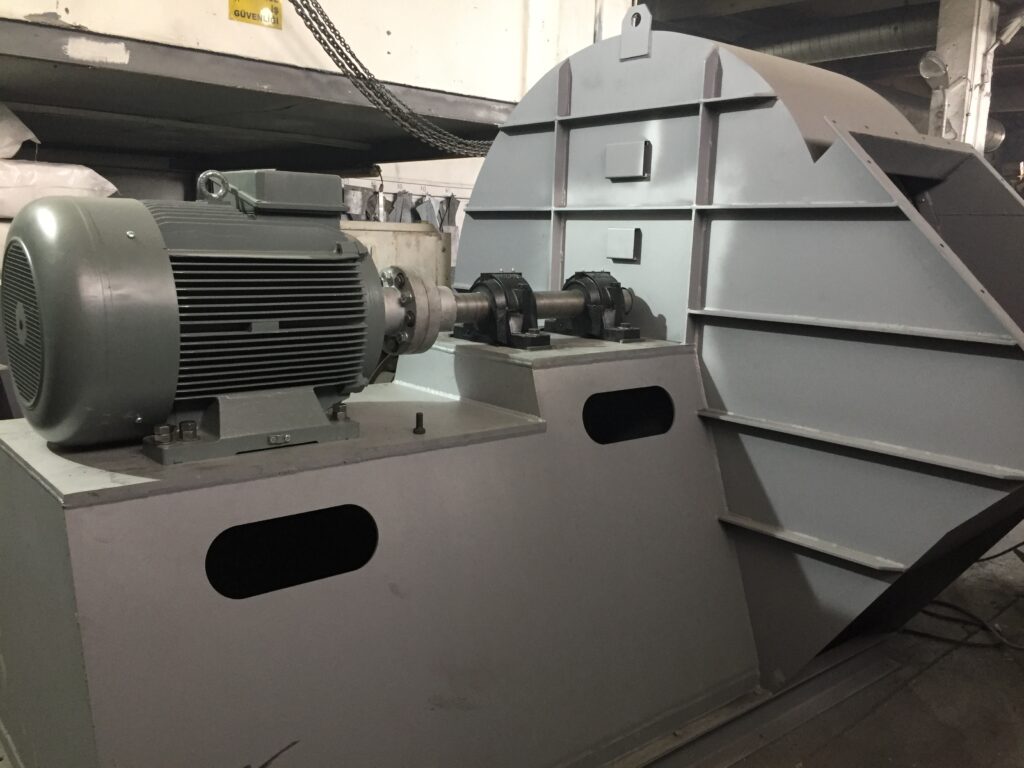
What are the Usage Areas of Radial Type Fans?
Areas of use are:
Industrial Applications
It is used to provide air flow in production processes in sectors such as chemistry, metallurgy, mining, textile, food, pharmaceuticals. For example, it is used in processes such as providing the oxygen required in chemical reactions, increasing or decreasing the heat in metal melting furnaces, ventilation in mines, drying or humidifying fibers in textile factories.
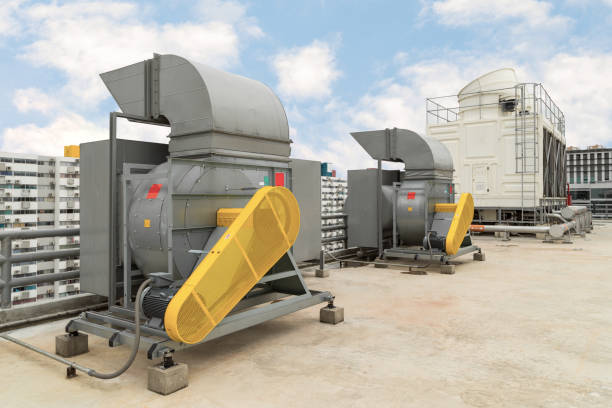
Ventilation Systems
In buildings, shopping malls, hospitals, hospitals, schools, hotels, gyms, etc., radial type fans are used for cleaning, refreshing and circulating the air. For example, it is used to expel the dirty air inside the buildings, to take fresh air from outside, to adjust the temperature and humidity of the air.
Heating and Cooling Systems
In heating and cooling systems, it is used for heating or cooling the air. For example, in devices such as air conditioners, heat pumps, boilers and radiators, it is used to heat or cool the air by contacting it with heat exchangers.
Drying and Baking Processes
In drying and baking processes, it is used to heat the air and blow it over the products. For example, it is used for drying or baking products such as food, paper, timber, ceramics.
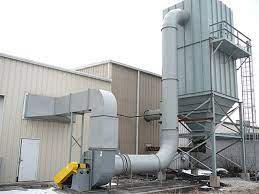
Dust Collection and Filtration Systems
In dust collection and filtration systems, it is used to purify the air from dust or pollutants. For example, it is used for collecting industrial wastes, preventing air pollution and protecting the health of employees.
Fire Extinguishing Systems
In fire extinguishing systems, it is used to prevent or extinguish the spread of fire. For example, it is used to increase the pressure of the air in fire escapes or tunnels to push back smoke, to carry oxygen to the fire site or to cool the fire.
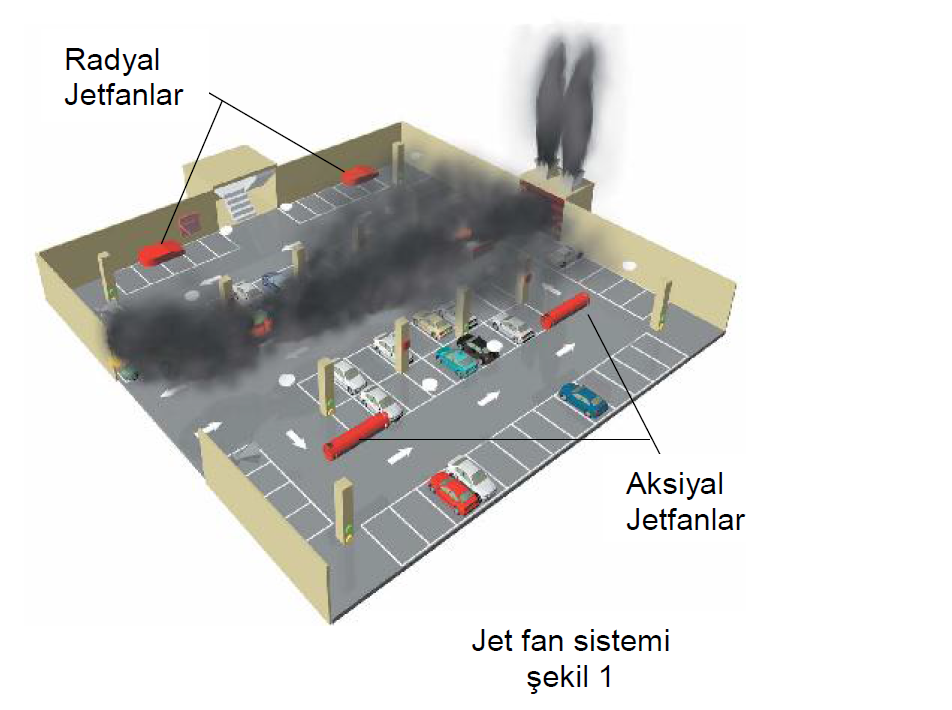
Question: How does a radial fan work?
Answer: It pushes the air from the center outwards with the propeller and changes the direction of the air with the blades.
Question: What should we consider when choosing a radial fan?
Answer: When choosing, we should consider factors such as the amount of air flow and pressure, ambient characteristics, installation method, energy consumption and efficiency, noise level and vibration, maintenance needs and ease.
There are some factors to be aware of. These are:
- Size and shape of the area to be ventilated
- Design and features of the ventilation system
- Temperature, humidity and pollution level of the air to be ventilated
- Performance, efficiency and noise level
- Size, weight and mounting method
With these factors in mind, it is possible to choose a mini radial fan that suits your needs.

Ensuring proper ventilation in commercial and industrial settings is crucial for maintaining air quality and worker safety. One of the most effective solutions for achieving this is through the use of radial ventilators. These systems are especially beneficial when dealing with high-pressure applications and concentrated exhaust streams. Understanding the different types, such as commercial radial ventilators and industrial radial ventilators, can help you select the best option for your specific needs.
A key component within these systems is the fan radial, which is designed to move air perpendicular to the axis of rotation. The performance of a radial flow fan is directly linked to its balance; therefore, regular maintenance, including knowing how to balance a fan, is essential for optimal efficiency and longevity. Whether you need a specific radial ventilation setup or are simply looking to improve overall air circulation, understanding the principles behind radial ventilator design and maintenance will contribute significantly to a healthier and more productive environment. The versatility of radial ventilators makes them a top choice for numerous applications.
How to Maintain a Radial Type Fan?
Maintenance is important to extend its lifetime and maintain its performance. When performing maintenance, you need to follow these steps:
- Clean it regularly. To prevent substances such as dust, dirt and grease from sticking to the impeller and casing, simply wipe with a soft cloth or brush or blow gently.
- Checking the radial fan motor. It is necessary to observe the motor of the radial fan to detect any damage or malfunction that could prevent the motor from working. If there are signs such as the motor heating up, making noise or vibrating, the motor may need to be repaired or replaced.
- Stabilizing the propeller. An unbalanced propeller can cause vibration and noise. To check the balance of the propeller, simply observe the propeller during operation. If the propeller is skewed or crooked, it may need to be corrected or replaced.
Click here for radial type fan prices. Click here for information about snail type fans. Click here for detailed information about fans.

